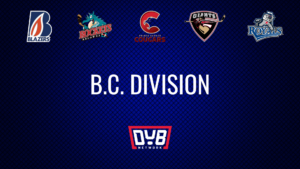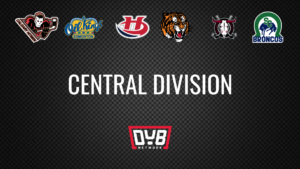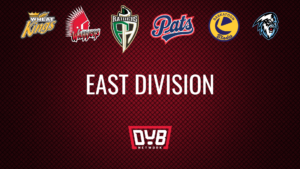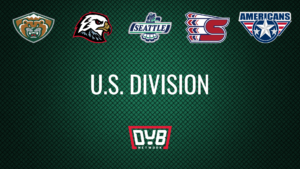DubNetwork had the chance to talk with WHL Commissioner Ron Robison this week and discussed a variety of topics.
Recently news came out that the WHL would be imposing new trade restrictions. The restrictions prohibit the WHL’s member clubs from trading signed 15-year-old and 16-year-old players. They also would only be able to a trade a 17-year-old if they requested a trade.
Commissioner Robison mentioned that though the news may have surprised some, it is something that the WHL has been discussing for quite some time.
“We have been having ongoing discussions about trade activity within our league for several seasons and in particular younger players who are entering our league or attending high school,” Robison said.
The decision may have been pushed forward with the trade activity this year. With teams like Regina, Swift Current and Moose Jaw trying to win it all, we saw a flurry of activity. From January 1st to 10th, there were a total of 81 players moved with a number of them being 15, 16 and 17-year-old players.
“There are some regulations that have been in place for some time. Part of our continuing effort to look at the player experience and making sure that the families and players that commit to our league are given every opportunity to try out and make the team of which they have been either drafted to or listed with. They need to be given every opportunity and we need to make sure there is a time frame that allows that to occur.”
“We felt strongly that if the player and the parent is making a commitment to the team, the team needs to make the same commitment to the families concerned.”
The discussion after news about the new restrictions turned to the differences between the WHL and the other two leagues in the CHL, the QMJHL and OHL. Robison knows full well that there are quite a few differences between the three teams, who all compete each May for the Mastercard Memorial Cup.
“There are a number of differences. On the regulations, I think we compare notes with respect to best practices and the goal that all of us have in each of our leagues is to provide the best possible experience we can for the player and the families. Each in our own way I think we have accomplished that.”
One thing that changed for the WHL and brought them a little closer to what happens in the others two leagues is the cutting out of four games for their regular season. What was once a 72-game campaign is now 68 games.
“There will be differences, certainly in the makeup. Our territories are quite different in terms of the size and scope of our league and then as a result there are some differences in the way we do approach things from time to time. For the most part though, we are pretty consistent in the manner in which we approach these types of situations.”
Specifically one difference in the leagues is the fighting restrictions placed by the OHL. If a player fights more than three times in a season, that player will be subjected to a two game suspension for each fight over the number allowed. There is not such restriction currently in place in the WHL.
“I think that is another example. Each in our own way we are looking to reduce or eliminate fighting or what we would call – unnecessary fighting in the game. In our case, we have a WHL Player Safety Seven Point Plan, which has been in place for several seasons. We review that annually and make recommendations and we will be reviewing that actually with our general managers at an upcoming conference in Edmonton next week. It is an ongoing process. We each approach things a little differently but for the most part we are on the same page as far as what we are trying to accomplish.”
Another change that was put in place over the off-season was the removing of a restriction that had been in place not allowing goalies to be drafted in the CHL Import Draft. After the restriction was removed, Lethbridge, Medicine Hat and Brandon each drafted an import goalie.
“First of all, the Canadian Hockey League is the top junior league in the world and we believe we need the top junior players in order to provide the best development for all of our players and goaltending is no exception.”
The reasoning behind the original restriction was to help the development of Canadian-born goalies. That commitment to netminders born in CHL territory is still there despite the removing of the restriction though. 
“We need to continue to work and commit to a goaltending development plan in particular in the Canadian system with Hockey Canada but we just feel that we need to make sure that best players are getting a chance to play in the best development league in the world. The decision to reinstate import goaltenders was an important one for us.”
Another league possibly looking at some changes is the NCAA. Murphy Stratton, who played 47 games with the Calgary Hitmen was allowed to commit to the University of North Dakota. This is an exception to the rule the NCAA has, to not allow players who have played in major junior to play at one of their schools.
“We’ve always believed that there should be no restrictions on the players and that the players should have that decision as to what post-secondary institution they choose to attend. We are very pleased, obviously with our WHL scholarship and our partnership with Canadian universities. The opportunities that our players get once they have graduated from our league to pursue education in Canada. Having said that, it would be in the best interest of the players and the families to have that option once they have completed their eligibility of attending university in Canada or the United States. We would love for them to have that opportunity.”
Robison is hopeful that the Stratton decision is one that leads to more players having a chance to change their minds after making a commitment at a young age.
“We hope that this is an indication that they are reconsidering their position overall eventually down the road we could have more of an open system with no restrictions on CHL players.”
The WHL has such a large territory in the United States and the growth of hockey in a lot of their region has brought about the need to try and find players in areas like Texas and California and expose them to what the WHL is.
“We believe strongly that the U.S. offers a great talent pool for the Western Hockey League and we need to be more active in the future. We have our annual U.S. Prospects camp for draft eligible players in Anaheim each season and that has been very successful for the past 12 years and we have now expanded that to Dallas with a second year, where we are looking at future prospects for the draft. Our intent would be to continue to expand that and conduct combines and evaluation camps throughout the Western United States territory.”
This summer has been a fruitful one for the WHL’s 2001-born age group. In the 2018 NHL Draft, there were only two WHL players taken in the first round. With 11 players on the 22-man U18 Hlinka Gretzky Cup roster, the WHL is looking at a strong possibility of a big bounce back year at next June’s draft.
“I think it really indicates that we can look forward to a really strong draft upcoming in 2019 in Vancouver for the Western Hockey League. We have some very exciting young prospects that will get an opportunity to showcase themselves at the Hlinka Gretzky Cup next week and we are really excited about the number of players. I think this really indicates what a great job our system is doing, as well as our clubs in producing some of the top talent. I believe this is the largest number of players we have had on a national Under-18 team. We are looking forward to great things and hopefully these players will benefit from this experience this summer.”
Just over a couple months after Regina hosted the 2018 Memorial Cup, Robison and the WHL have to already turn their attention to the 2020 Memorial Cup and the four cities trying to host.
“We are in the process of evaluating those bids. The process will conclude at our meeting in October with the Board of Governors -at which time a decision will be made about the 2020 Memorial Cup.”
“Each of the four bid centers: Victoria, Lethbridge, Kelowna and Kamloops have done an excellent job in preparing their bids.”
Work is already underway in looking at what each bid center has to offer.
“We are at the first stage of that which is evaluating their depth charts. That will take place starting next week and we will be concluding in the middle of August. Then we will work into the actual event business plan from there in preparation for our presentation to our board of governors at the meeting on October 3rd in Calgary.”
The WHL lost an important video partner in Shaw before last season and the WHL has been trying to figure out a way to continue to reach its fans.
“We have our national broadcast agreement with Rogers Sportsnet. We are looking forward to them featuring as many games in the Western Hockey League as possible on that schedule. From there, we are certainly looking for ways to expose our product. Interestingly enough, with technology being what it is today, our webcast on WHL Live reached a record number of viewers last year and we are going to continue to build on that. We think that is a great product for the fans and families and the general public as well.”
Despite the number of viewers using WHL Live Robison knows the WHL needs to continue developing new ideas.
“We are also looking at some new content programming ideas that we will present at the start of the season. Broadcast and continued exposure to content is a real priority for the Western Hockey League.”
With all of the change already revealed, more coming and some new broadcast options coming, the WHL’s 2018-19 season looks to be an extremely compelling one.




